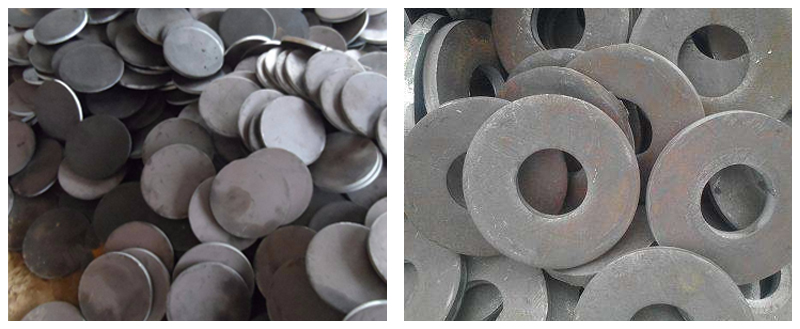Forging flange material
Forging flange materials are mainly steel materials, and less ferrous metals. It has three forms: rolling material, forging flange material and ingot. Rolling and forging materials are often used in medium and small forgings, and ingots are often used as raw materials for large free forgings. The materials for forging flanges include two main categories: carbon steel and alloy steel.

1. Carbon steel
Carbon steel is an iron-carbon alloy containing less than 2.11% carbon and a small amount of silicon (Si), manganese (Mn), sulfur (S), phosphorus (P) and other impurities, commonly known as carbon steel. It is widely used in manufacturing machinery parts, tools and equipment. At present, the output of carbon steel accounts for more than 90% of the total output of world steel.
There are three methods to classify carbon steel for forging flange: low carbon steel (<0.25%), medium carbon steel and high carbon steel (>0.60%), according to the carbon content of steel; common quality steel, high quality steel and high quality steel according to the content of harmful elements sulfur S and phosphorus P in the quality of steel; carbon structure steel (common carbon structure steel) according to the use of steel. Steel, high quality carbon structural steel and carbon tool steel (general purpose carbon tool steel and high quality carbon tool steel).
Brand of Forged Flange Carbon Steel: High Quality Carbon Structural Steel Name: Named according to the amount of carbon content in such steel. Steel with manganese content less than 0.8% is represented by a value of 10,000 times the carbon content, and steel with manganese content more than 0.8% is represented by “Mn” element after the carbon content.

2. Alloy steel
Alloy steel is to improve the comprehensive mechanical properties of steel, improve the technological properties of steel, or in order to obtain some special properties, on the basis of carbon steel, purposefully add a certain amount of alloy elements and steel grades. These alloying elements include titanium, vanadium, nickel, tungsten, molybdenum, silicon, aluminum, boron and rare earth elements.
Classification of alloy steels for forging flanges: Alloy structural steels (structural steels for engineering and machine building), Alloy tool steels (alloy tool steels, alloy measuring steels, cold working die steels, hot working die steels, plastic die steels, high speed tool steels) and special steels (stainless steel, heat resistant steels, abrasion resistant steels) According to the alloy content, the steel can be divided into low alloy steel, medium alloy steel and high alloy steel; according to the microstructure classification, the steel can be divided into hypoeutectoid steel, eutectoid steel, hypereutectoid steel, ledeburite steel and pearlite steel, bainite steel, martensite steel and austenite steel.
Forging flanges alloy steel grades: alloy elements are indicated by chemical element symbols in grades. When the average content of an element in steel is 1.5% – – 2.49% or 2.5% – – 3.49%, the symbolic digit of the element is 2 or 3, if the content is higher, and so on. Carbon content of alloy steel is numerically indicated: alloy structural steel is marked with two digits representing ten thousand times of average carbon content in front of the steel number. Alloy tool steels are marked in front of the steel number with one digit representing a thousandfold of the average carbon content. When the average carbon content is more than 1.0%, there is no need to mark the carbon content. High speed tool steels generally do not contain carbon content.




